
3D Picture Magic: Transform Images into Depth
In today's world, 3D pictures have become very popular. They mix depth perception with art. This magic turns flat images into 3D, amazing everyone who sees them.
Thanks to new technology, like stereograms and Magic Eye images, making these pictures is easier than ever. Platforms like 3D AI Studio make 3D modeling fast and simple. We'll learn more about 3D pictures, their history, and how to make them.
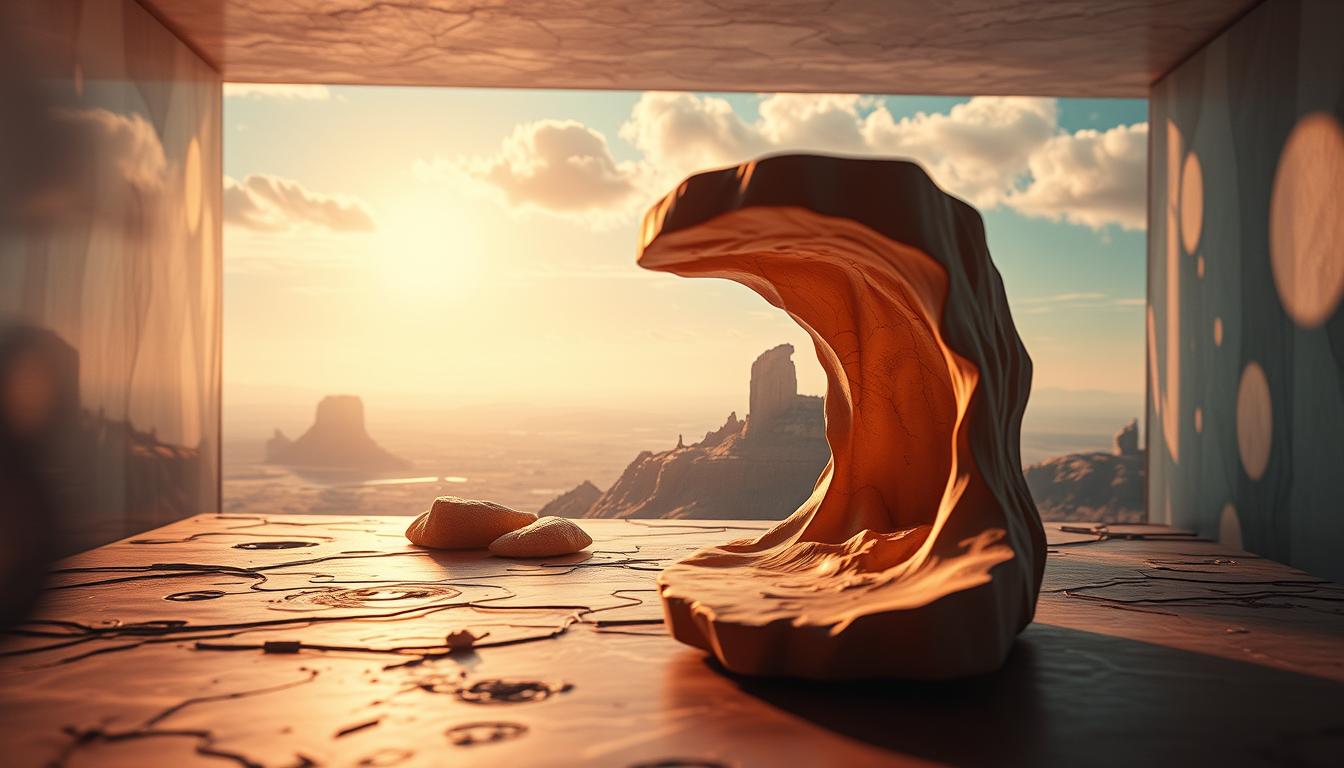
Key Takeaways
- The combination of 2D images and advanced technology brings about transformative 3D pictures.
- Understanding depth perception is crucial for creating effective stereograms.
- Magic Eye images provide a unique viewing experience that challenges traditional image representation.
- Tools like 3D AI Studio facilitate quick creation of 3D models from various image types.
- Creating high-contrast patterns is essential for successful stereogram design.
- AI continues to enhance the accuracy and efficiency of 3D modeling processes.
Understanding 3D Images and Their Appeal
The history of 3D images started with stereoscopes in the 19th century. These devices showed depth in photos. This led to more visual interest.
The evolution of stereograms brought big changes with autostereograms in the 1990s. These were known as Magic Eye pictures. They became very popular, as people enjoyed finding hidden images.
These images are special because they play with our minds. They make us see depth that isn't really there. This is thanks to cognitive psychology.
The History of 3D Images
The history of 3D images is full of interesting moments. Charles Wheatstone started it all in 1838. Then, in the mid-19th century, people began working on moving images.
In 1922, the first 3D movie, "The Power of Love," was shown. This was the beginning of a new era in movies. The 1950s saw a big increase in 3D films, like "Bwana Devil."
Over time, technology improved a lot. Now, we have Real-D technology in cinemas.
Why 3D Pictures Are So Mesmerizing
3D images are more than just cool to look at. They make people feel something special. The illusion of depth draws us in.
This makes us curious and want to dive in. As we look at these images, our minds work hard to find the hidden parts. This makes the experience fun and memorable.
Click Here to Watch Video Tutorial.
The Science Behind 3D Picture Effects
Learning how our brains see depth is key to understanding 3D images. Our visual system uses many cues to figure out depth. Optical illusions show how our brains can be tricked into seeing things that aren't there.
These tricks are the basis for the amazing world of stereograms. They use visual illusions to create stunning 3D images.
How the Brain Processes Depth Perception
Our brains combine what each eye sees to create a 3D view. This is like having two cameras 2.5 inches apart, like our eyes. Binocular disparity and focus shift help us see depth.
When we see stereogram magic, our brain mixes the images. This turns flat pictures into detailed 3D scenes. It's a way to see depth in a new way.
Optical Illusions in Stereograms
Stereograms create 3D images using optical illusions. They don't need special tools. The "wallpaper effect" is when our brain sees different planes in repeated patterns.
Looking at these images, our brains work hard. This makes the experience even more amazing. These tricks are why Magic Eye pictures are so loved.
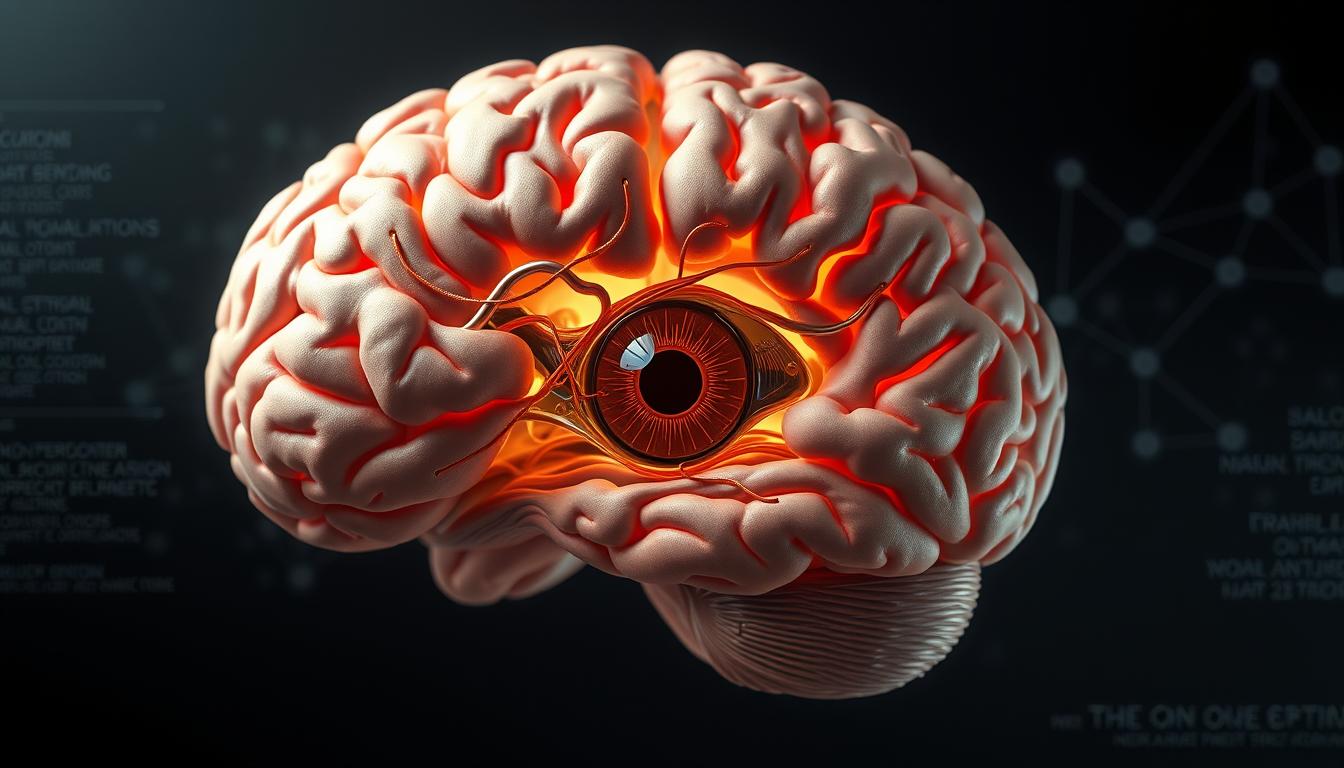
What Are Magic Eye Pictures?
Magic Eye pictures are a mix of art and fun. They became popular in the 1990s. They make you see three-dimensional images from just two-dimensional pictures.
The magic happens with a special trick called autostereograms. These use patterns to show depth without needing special glasses.
Introduction to Autostereograms
An autostereogram is a special 3D image. It makes depth seem real with simple patterns. Unlike other 3D images, it only needs one picture.
This idea, known as Magic Eye images, lets people see hidden pictures. It's like a puzzle for your eyes. It brings back memories of the 90s and how cool our brains are.
Magic Eye Pictures in Popular Culture
Magic Eye pictures have changed pop culture a lot. In the 1990s, they were everywhere. You could find them in books, galleries, and even on stuff you could buy.
They were a new way to play with your eyes. They made people think about how our brains see things. Today, they still amaze us and are a big part of art talks.
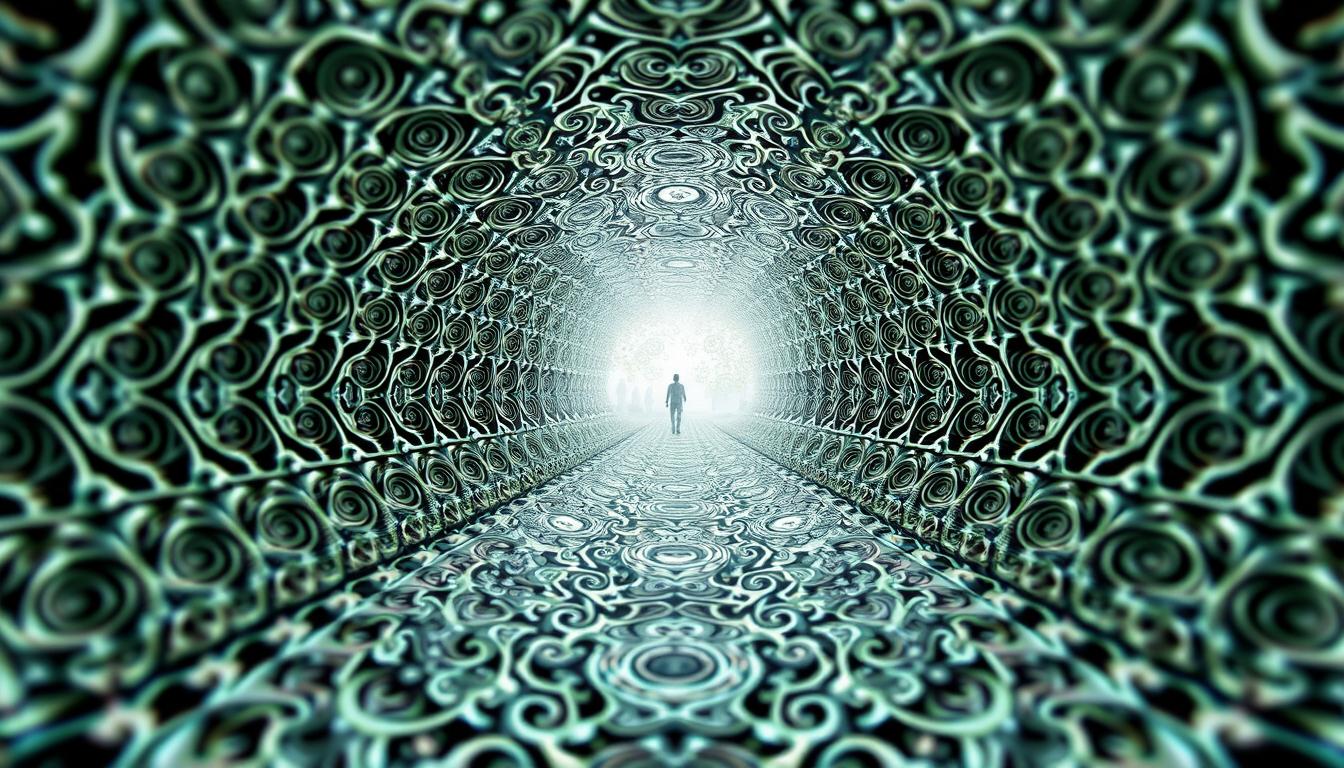
Creating Your Own 3D Picture
Starting to make your own 3D pictures is exciting and rewarding. You need the right tools and to know the methods. This section will give you the tools for creating 3D images and a clear step-by-step guide.
Tools You’ll Need
To begin making your own stereograms, you'll need some tools. Here's a list of software for stereograms and graphic design apps:
- Easy Stereogram Builder - A user-friendly app for creating stereograms.
- 3D Slash - Great for beginners, it's fun and easy to use.
- Photoshop - A powerful tool for editing and creating depth maps.
Choose software that fits your style. Do you like 3D Slash's interactive feel or Photoshop's editing power? The right tool helps you learn how to make stereograms.
Step-by-Step Guide to Making Your First Stereogram
Making your first DIY 3D picture is easy with this step-by-step guide. Just follow these steps:
- Select a Background Image: Pick an interesting image for your stereogram. High-contrast images are best.
- Create a Depth Map: Make a grayscale image where light areas are close and dark areas are far.
- Using Software: Put your background and depth map into your chosen software.
- Export Your Stereogram: Save your image in a format for viewing or sharing.
These steps help beginners make amazing 3D images. Try different images and depth maps to improve your skills. Use the tools for creating 3D images to your advantage.
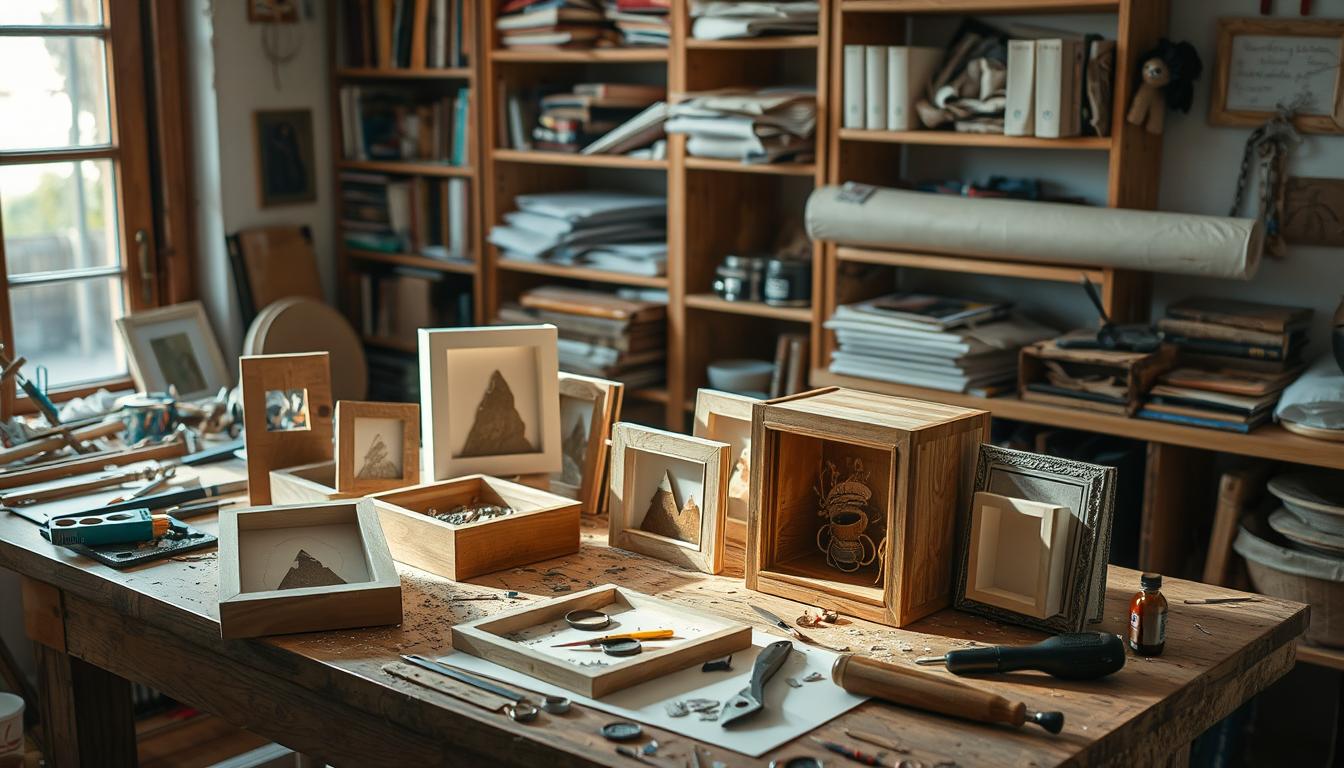
These first steps will help you master making stereograms. You'll be ready for more complex projects soon.
Understanding Depth Maps
Depth maps show how far objects are from the camera. They are key for 3D images. A depth map is a grayscale image where light means close to the camera. This helps us see depth better.
What is a Depth Map?
A depth map is a 2D image that looks like 3D. It's in grayscale. Making depth maps breaks down images into layers.
Each layer gets a value based on how far it is from us. Depth maps are vital for 3D experiences. They help in fields like medicine and self-driving cars.
How to Create and Use a Depth Map for 3D Images
There are many ways to make depth maps. You can use 3D software or turn many images into depth maps. Tools can make detailed point clouds, making images more accurate.
For stereograms, keep lighting the same and gradients smooth. This avoids a "cardboard cutout" look. Using these methods, artists and engineers can make amazing 3D images.
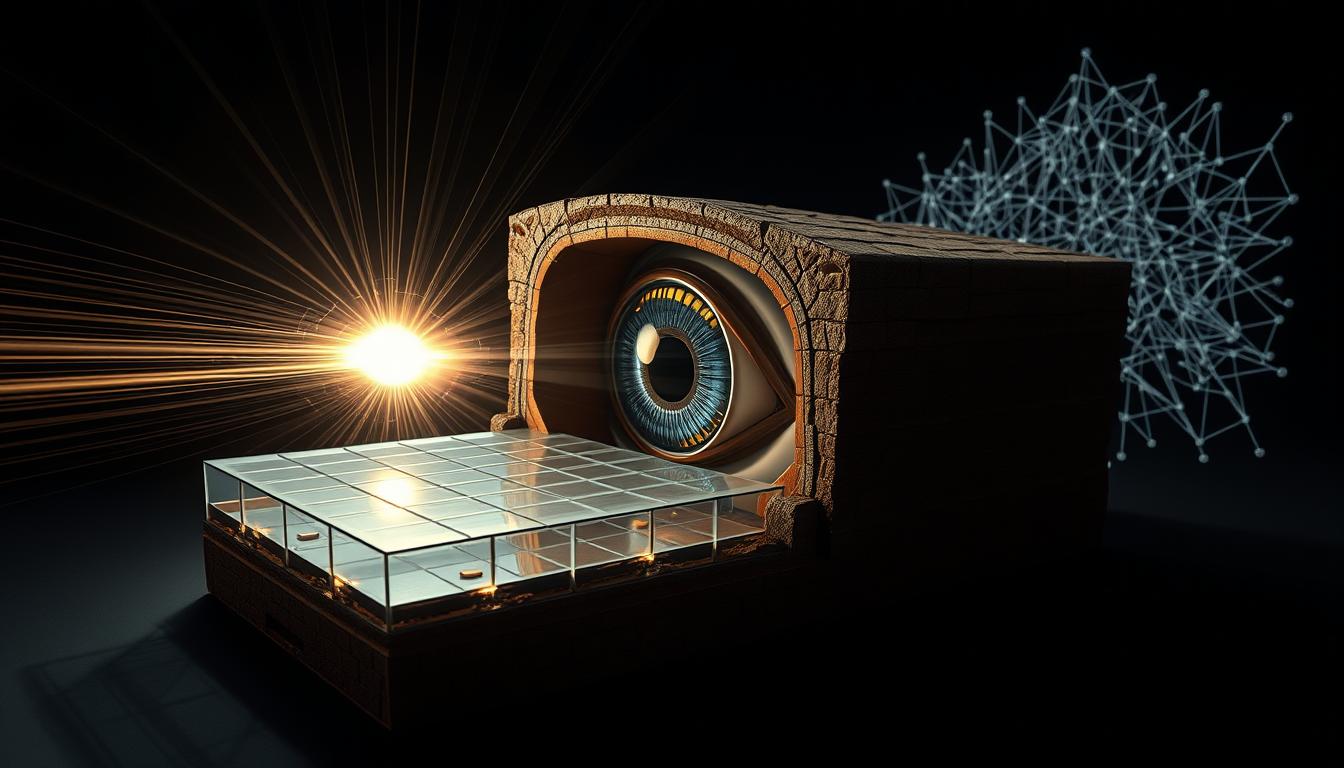
For examples of depth maps in action, see this resource. Learning about depth maps will improve your 3D modeling and stereogram skills.
Tips for Enhancing Your 3D Picture Experience
Improving your 3D picture experience takes a few key steps. These steps can greatly enhance depth perception and image quality. Learning to adjust settings can make your 3D visuals more engaging. Focus on depth perception adjustments to boost the immersive feel of your images.
Adjusting Parameters for Better Depth Perception
Adjusting depth perception is crucial for a deeper 3D effect. Use tools to tweak depth shift levels for a better viewer experience. It's important to try different settings to find the perfect balance. This will improve your 3D image quality.
Lighting and Contrast Considerations
Good lighting for 3D images is key to seeing depth and textures. High contrast between objects and backgrounds is essential. This contrast makes objects stand out, enhancing the viewing experience. Adjusting brightness can also make depth more apparent, bringing images to life.
Viewing 3D Images Effectively
Seeing 3D images can be a fun journey. Learning the right ways to view them makes it even better. Knowing how to see stereograms clearly can change blurry images into amazing 3D scenes.
Techniques for Proper Viewing
To get the most out of your 3D viewing, try these tips:
- Relax your eyes before looking at the image.
- Place the image 50 cm away, or 100 cm for beginners.
- Look past the image to help your eyes cross, which improves depth.
- Make sure the room is not too bright to avoid glare.
- Start with bigger images for beginners, as they need less eye crossing.
Using these methods, you can see Magic Eye pictures better. You'll enjoy the hidden details in each image more.
Common Mistakes to Avoid
Many people make mistakes that can ruin their 3D viewing. Here are some common errors to watch out for:
- Looking too hard can cause eye strain or headaches.
- Not keeping the right distance can make the image look wrong.
- Not relaxing your eyes first can make it hard to see depth.
- Not focusing on something beyond the image can make it unclear.
Avoiding these mistakes helps you enjoy 3D visuals more. By practicing, you'll get a better experience with this exciting medium.
Applications of 3D Pictures in Modern Art and Marketing
3D images have changed art and advertising a lot. Businesses want to stand out, and 3D images help a lot. They make marketing better by adding depth to pictures.
This section will look at how brands use 3D images in ads. It will focus on interactive marketing that grabs customers' attention. This makes shopping more fun and engaging.
Using 3D Images for Interactive Advertising
More and more people want 3D images in ads. Over 50% of shoppers say visuals affect their buying choices a lot. This shows how important good visuals are.
Online shoppers want to see multiple product images they can play with. This makes them feel like they're really choosing something. Companies are using 3D product photography to meet this need.
- Cost-effective solutions: 3D product modeling lets businesses make great visuals without the real product. This saves money.
- Enhanced customer engagement: 3D visuals make people more involved. They turn viewers into active participants.
- Versatility: 3D images can show different product versions easily. This means no need for many photoshoots.
- Faster production: Making 3D visuals is quicker than old-school photography. This means campaigns can change fast.
- Detailed presentations: 3D visuals often look better than photos. They show product details clearly.
The Role of AI in Creating 3D Art
AI has changed how we make 3D images. New tech makes realistic visuals easier to create. This is a big change.
- AI makes making depth maps and stereograms easier. This saves a lot of work.
- AI lets models change in real-time. This means the latest product versions are always shown.
- AI saves money for businesses. Models can be used in many campaigns, cutting costs.
In short, tech and 3D images are changing how brands show their products. This makes marketing better and helps customers feel more connected. It's a win-win for everyone.
Conclusion
Exploring 3D pictures shows how they can change simple images into amazing views. They grab people's attention in many areas, like art and marketing. New tech, like passive glasses, makes these images even clearer.
Learning about stereograms shows us how depth and viewing techniques matter. It's not just about seeing things, but also making our own 3D images. This opens up endless possibilities for art and telling stories.
Now, it's your turn to get creative with 3D images. Start making your own amazing visuals. Use what you've learned for fun projects or work. You'll surely impress and engage people in new ways.
FAQ
What are 3D pictures and how do they work?
3D pictures, also known as stereograms, create depth by using special visual cues. They turn flat images into lively scenes. This engages viewers through binocular disparity and perspective.
How did 3D images originate?
3D images started with the invention of stereoscopes in the 19th century. The 1990s saw a big leap with "Magic Eye" pictures, changing how we see.
Why were Magic Eye pictures so popular in the 90s?
Magic Eye pictures were loved in the 1990s for their cool effects and ease of use. They became a big hit, showing up in books and galleries. They brought back memories for many.
What are depth maps and why are they important?
Depth maps are grayscale images showing how far objects are from us. They're key in making 3D images. They help turn depth info into a visual experience.
How can I improve depth perception in my 3D images?
To better depth perception, tweak depth shift and contrast. High contrast between the background and 3D object also helps a lot.
What tools do I need to create a 3D picture?
You'll need online stereogram generators and graphic design software like Photoshop. Tools like 'Easy Stereogram Builder' are great for all skill levels.
What techniques should I use for viewing 3D images correctly?
For best viewing, relax your eyes and focus on something beyond the image. Adjust your distance too. These steps help you see the 3D better.
How is artificial intelligence influencing 3D image creation?
AI is making depth maps and stereograms easier to make. It's changing how artists and marketers create visuals. It makes things more creative and efficient.
What are some common mistakes people make when viewing 3D images?
Mistakes include straining your eyes and not keeping the right distance. Not relaxing also hurts the experience. Fixing these issues makes 3D images more enjoyable.